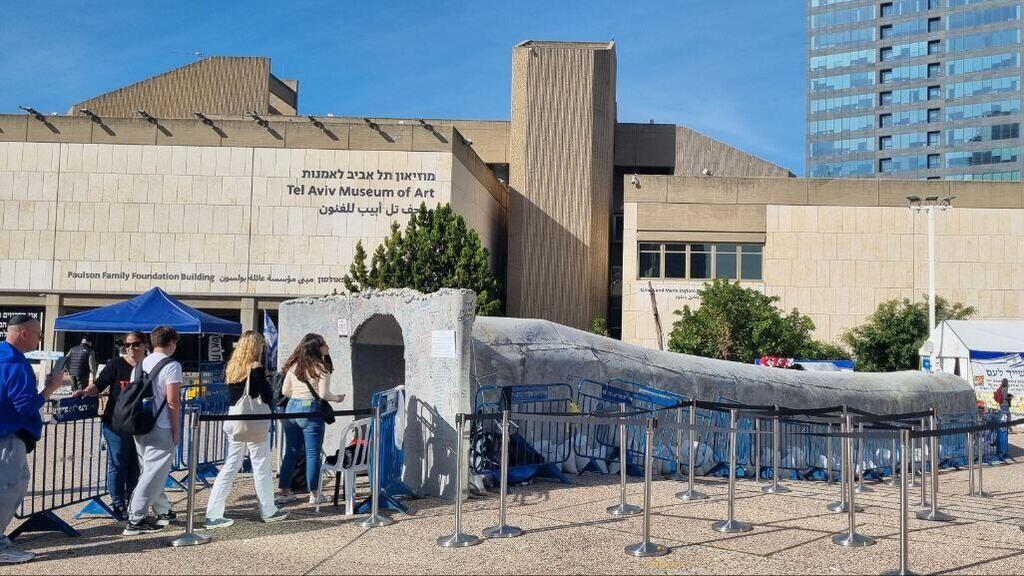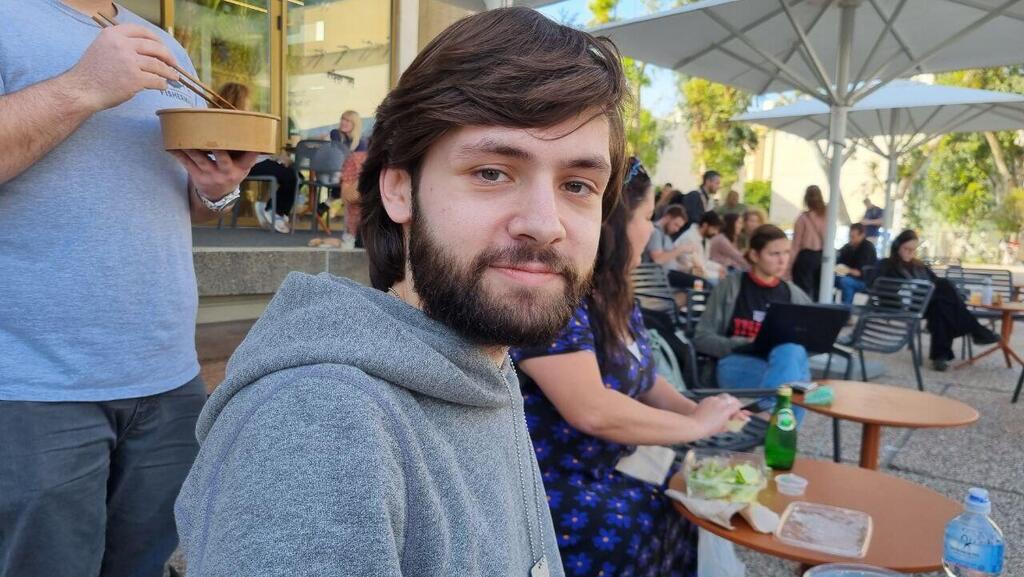Getting your Trinity Audio player ready...
Hatofim Square has become a must stop for anyone visiting Israel
(Video: Assaf Kamar)
109 days have passed since the outbreak of the war on October 7, and the number of tourists coming to Israel has dropped significantly following Hamas' terror attack. Those who do come, whether as typical tourists or visitors on study or volunteer programs, experience a different Israel than in peaceful times.
Read more:
Hostages Square outside the Tel Aviv Art Museum has become a must-visit for those tourists seeking to express solidarity with the pain of the families.
We spoke with visitors at the square and did not have any difficulty finding English speakers. Groups of youths from around the world who came to volunteer and support Israel were mixed in with the constant stream of Israelis around the art installations and stalls selling shirts and stickers that have become symbols of the struggle for the return of the hostages.
While chatting, we encountered Elyana Bednarsh from New York who came with her 80-year-old father, a surgical doctor, to volunteer for a week at Tel Aviv Sourasky Medical Center. This is not her first time at Hostages Square, which is not far off from the hospital
During the conversation, Elyana became emotional talking about Kfir Bibas, an Israeli baby who was abducted on October 7 alognside his family and marked his first birthday in captivity last week.
"They all have to come home. Today is Kfir Bibas's birthday. He spent more than a quarter of his life in a tunnel," she said, holding back tears. "These are all people with families and lives and stories and they all need to come home."
"In my opinion, every tourist who comes to Israel must visit this place. People from all over the world need to come here as tourists and understand what's happening," she added.
Entering the mock Hamas tunnel at the square meant to briefly simulate the situation of the hostages being held underground, I met Alex Lamaddy from Chicago, a student currently studying in Jerusalem. "A horrific shame, and it's important that the stories of the hostages stay at the front of our minds and I think what's being done in places like [Hostages Square] is really essential for keeping their story alive," he said
In the library of Beit Ariela, near the various checkpoints and the stage, a café operates with a cosmopolitan atmosphere. Many tourists like to sit there and talk about the experiences they had during the tour of the square.
From the café, we returned to the square, where we heard a loud voice with a distinctly Southern American accent. "We came to show support with Am Yisrael (the people of Israel) and we came as the Jewish leader of the community," said a man named Pesah, who arrived at the square from Nashville, Tennessee.
He emphasized the profound impact of the art on visitors' emotions and conveyed his regret that such a square even needed to exist. He said that walking through it, a mix of emotions, including sorrow, anger, frustration and a feeling of community, overwhelmed him.
Pesah also pointed out the current media landscape in the U.S. causing confusion among the public regarding events in Israel and that the reason for their visit was to share the story of the hostages back home. He added that every tourist in Israel should include this place in their itinerary, as it offers an inspiring experience.







